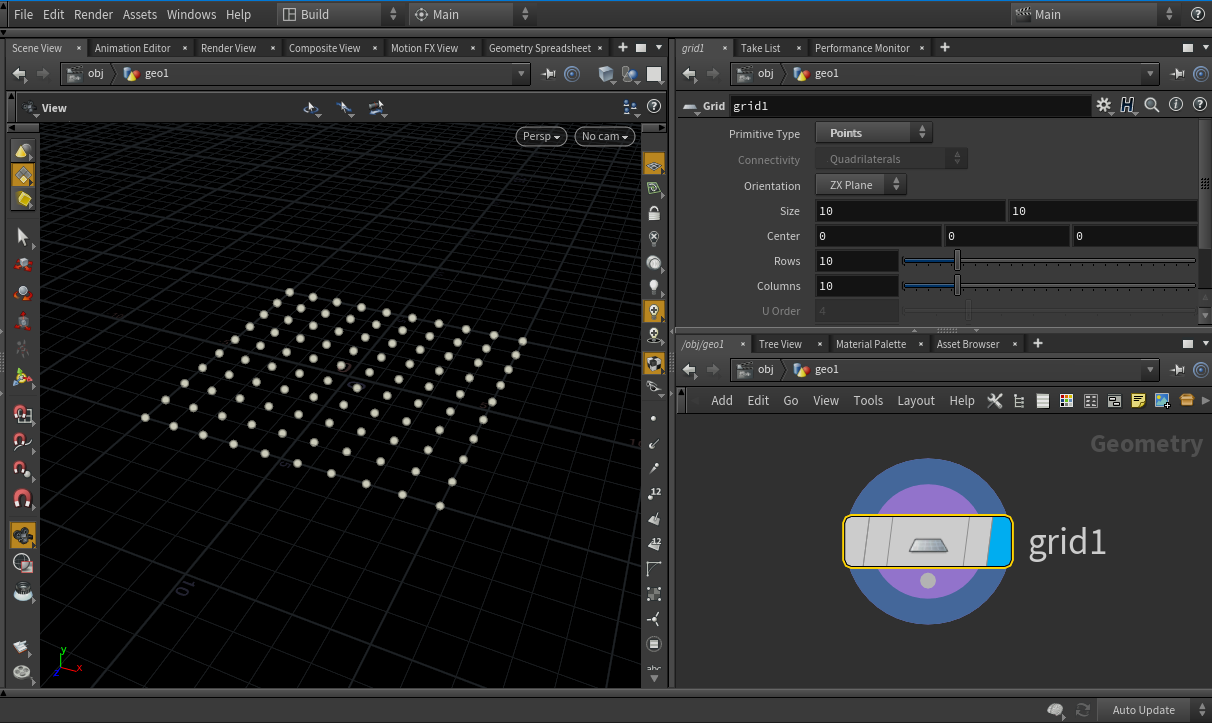

You import data that has time values stored as a string like 'T19:04:06.900', and you want to convert that to regular seconds. Here's an example of why you might need this.

attribValue ( "Cd" ) # Set an attribute for point in geo. iterPoints ()) # get a point attribute for point in geo. attribValue ( 'tmin' ) # Get for point in geo. Point, "id", 0.0 ) # Get a detail attribute start = geo. This is like a 'attribute create sop', so only do this once, not while looping over geometry! # the default value sets the type, so 1.0 is a float, but 1 is an int. There's no implicit parallel processing here, so you usually have to setup a loop of some kind to read all the points or write all the points. A python sop is handy for esoteric things like reading in odd file formats and converting directly to geometry, or processing odd string and time formats into something more vex friendly for later on. Remember a python sop is like a wrangle, only obtuse. When you get into making HDAs python can live there too, and final python mastery comes from extending the pythonlibs paths, having python on disk, but that's more for pipeline td's.įor the second, a good place to start is the python sop. Once you start creating reusable little snippets, the shelf is the easiest way to store those things. You can open the python console and use it pretty interactively, query all sorts of things about houdini, your hip file, the UI. The first category is the more common use case. Don't do this! Only jump into Houdini Python when you feel you understand proceduralism, the Houdini way of things.įor the rest of you, 2 and 3 broadly filter down into these categories:

#Houdini vex add attribute code
If you jump straight into houdini python, and end up driving Houdini like its Maya, you end up making slow, over engineered, code heavy setups. Because of this, most of the reasons you'd use python in Maya aren't required in Houdini.
#Houdini vex add attribute full
Houdini is designed to work with full construction history enabled and live at all times, or to be reading files from disk 'live'. I rant at length about this in various places, but the core idea is that you use python in maya to get around a lot of its shortcomings workflows are often brittle and need to destroyed and recreated on demand, assets are 'baked' into the scene and need to be reimported, stuff can't easily be changed after the fact. If that is you, turn right around and go to the Houdini page or the JoyOfVex page, but don't jump into Houdini Python just yet. They need to import or export esoteric file formats, do fiddly string formattingĢ and 3 are valid reasons.They need to do pipeline or UI customisation.They used python in Maya, and assume it makes more sense to jump into python in Houdini rather than Vex or to learn more advanced sops.People look at python in Houdini for 3 broad reasons: 3.19 Set keyframes with python from right click menu.

3.18 Read a csv as points with attributes.3.17 Get absolute node path from relative parameter path.3.16 Create command line for selected tops node.3.15 Create sticky notes with random colours.3.14 Write some detail attribs out to a json file.3.11 Create a cop file node for every subdir of a directory.3.10 get attrib from point listed in group field of sop.3.7 Drag most things into the python window.3.5 Change all nodes of type to another type.


 0 kommentar(er)
0 kommentar(er)
